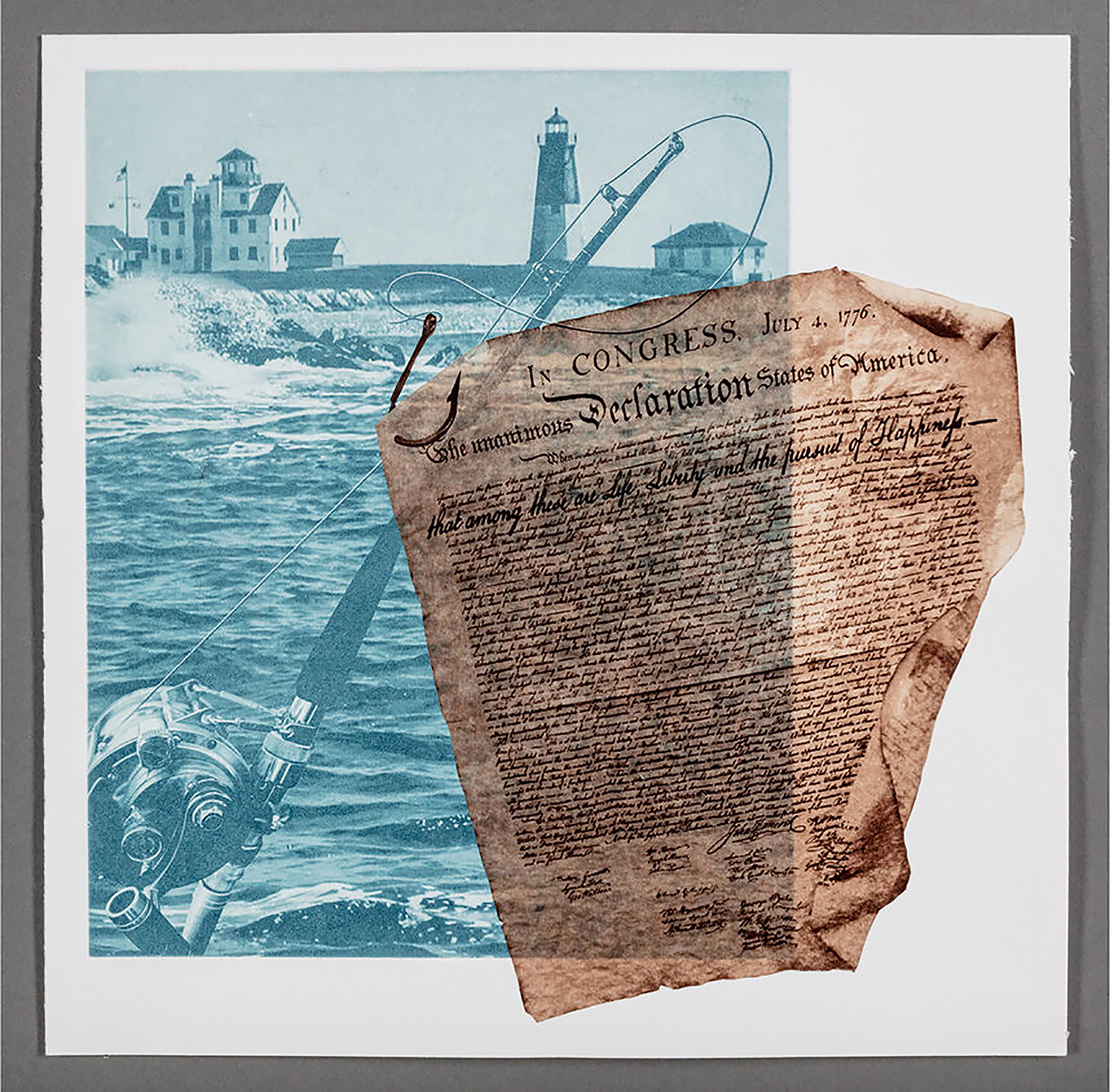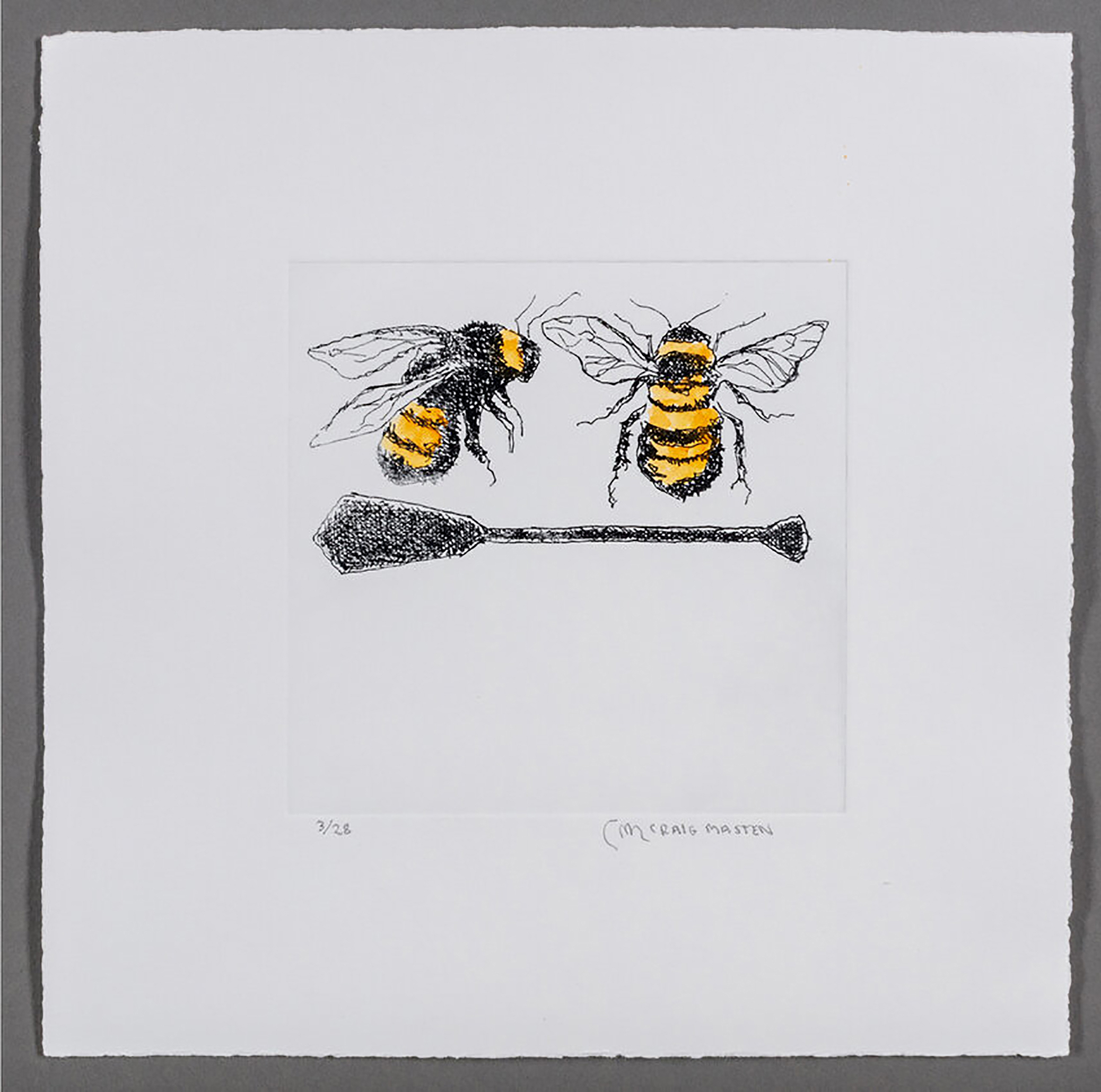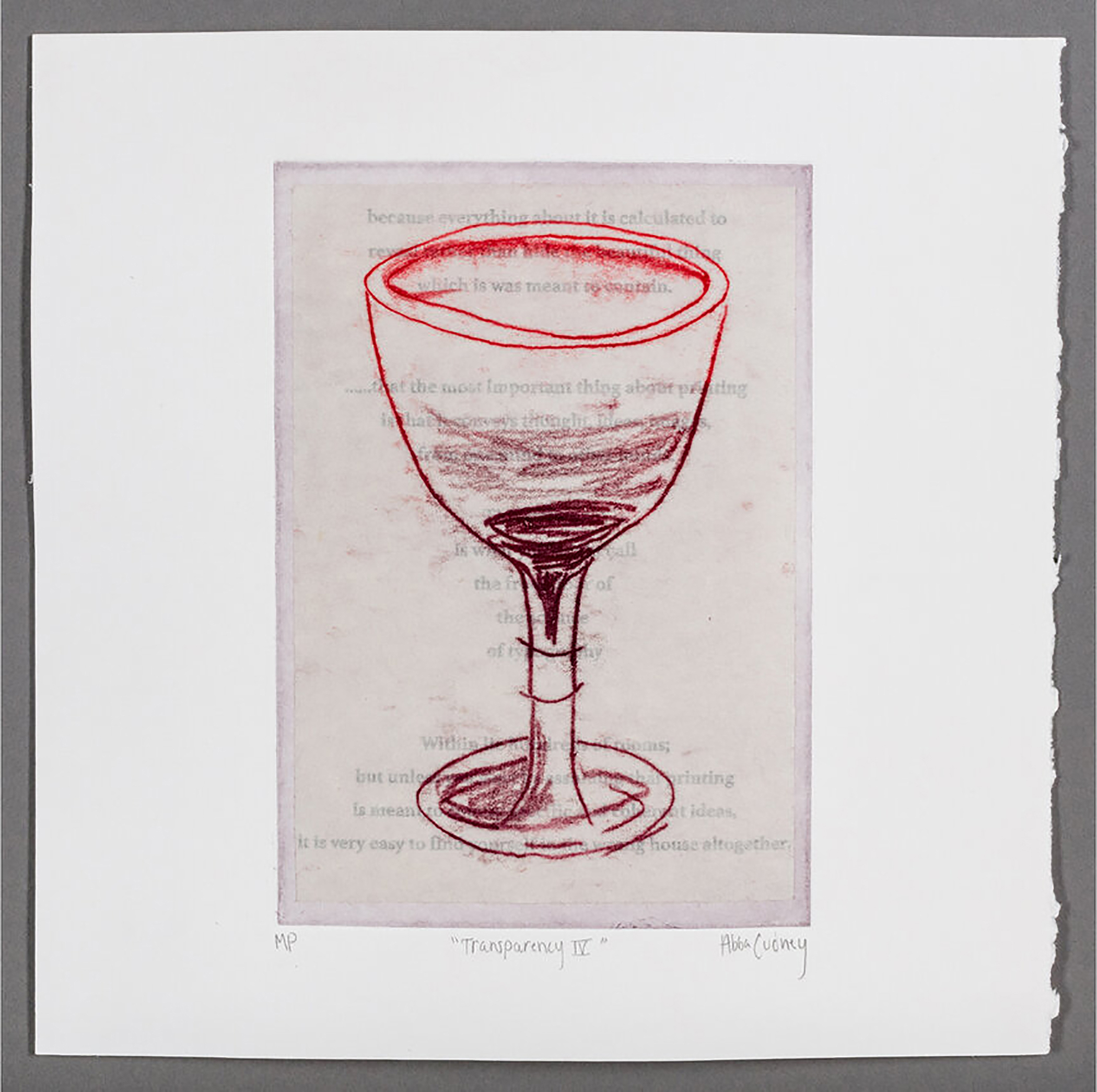
The year of narrative art continues at Mystic Museum of Art (MMoA) with More Than Hot Type, a special printmaking exhibition presented in collaboration with the Providence Art Club (PAC) of Rhode Island. This exhibition is the final opportunity to see the original prints and artists’ statements of this prestigious portfolio before it joins the Graphics Art Collection of the Smithsonian Institution’s National Museum of American History.

“Printmaking is a powerful medium,” says Michael Rose, Gallery Manager of the Providence Art Club. As a relatively inexpensive way to create multiple “impressions” or copies, printmaking can reach a broad public. Closely allied with the printed word and the use of type, printmaking has been used since the Middle Ages to inform and persuade the public at large. Whether as illustrations, or calls to action, prints constitute a potent form of narrative art.
Individual artists can create single prints or “edition” a print, that is, create multiple copies of the same image. An artist may also create a print portfolio of images from a number of different editions, constituting a set of images that explore a given subject or theme.

Group portfolios, such as Hot Type, are sets of prints created by different artists. Each artist in the group editions a single image. The group then collates the images from each edition to assemble group portfolios. Such group portfolios gained popularity at the end of the 19th century as a way for artists to collaborate in marketing their work. The variety of images and styles were popular with the public, and affordable for collectors. Group portfolios also often highlighted pressing social issues of their times, in the wake of the Industrial Revolution and the Great Depression.
The Hot Type portfolio—PAC’s fourth to be organized by Rhode Island printmaker Carol Strause FitzSimonds—continues this tradition of collaboration and social commentary. For Hot Type, PAC drew inspiration from Beatrice Warde, historian of printing and typefaces. In her manifesto entitled “This is a Printing Office” Warde emphasized the power of the printed word—and image—to spread the truth and expose falsehood. Warde described how printers and printmakers “verify by proof,” that is, pull a sample image or page to check for flaws or errors. Warde used the phrase as a metaphor for testing ideas and rhetoric by holding them up for inspection. PAC artists were inspired to apply Warde’s thinking to the present day, as a means of exposing misinformation and “fake news.”

The artists chose the title “Hot Type” for this exhibition, to connect it with the literary and activist uses of print, as well as the medium of printmaking. “Hot type” refers to the hot lead poured into brass letter molds (or matrices) to cast lines of type, in the late 19th Century. This innovation in printing made it possible to reach vastly more people, less expensively, than ever before.
The ”more” in More than Hot Type alludes to the special programming planned around the exhibition. MMoA will offer six special weekend printmaking workshops taught by the portfolio artists, starting at the end of March.
—
More information about the Hot Type portfolio, including images and artist statements of each print, can be found here.
—
Support for this exhibition was provided by CT Humanities (CTH), with funding provided by the Connecticut State Department of Economic and Community Development/Connecticut Office of the Arts (COA) from the Connecticut State Legislature.
